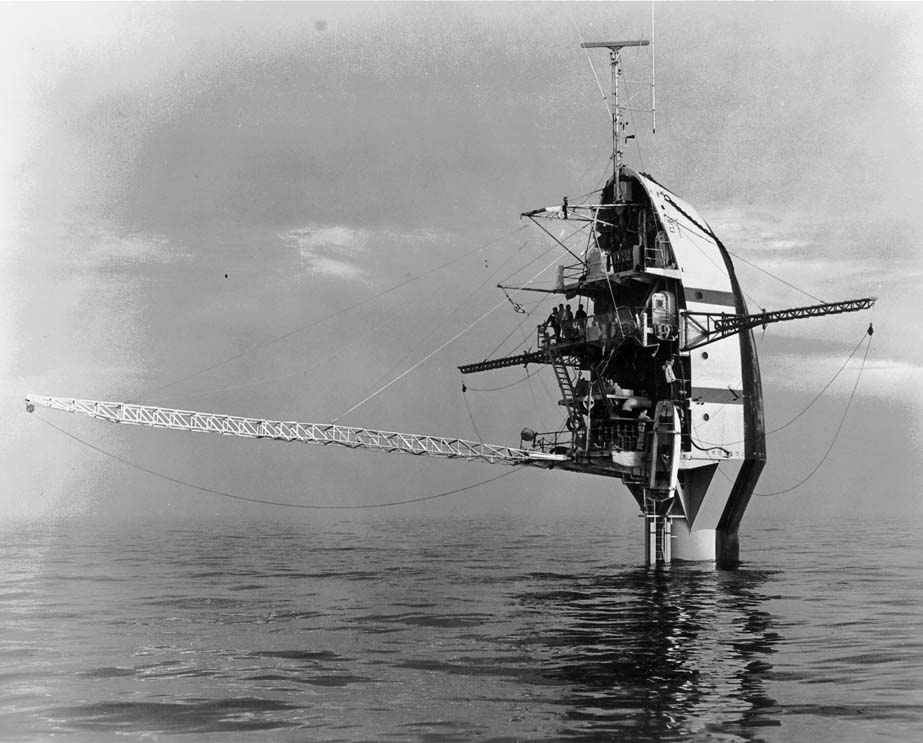There are many interesting research vessels, and I encourage you to look them all up, but and interesting one, that I found to day, is called the FLIP.
The FLIP stands for FLoating Instrument Platform. (The L is the L in fLoating.)
The FLIP had no engines like the other research ships, but was towed to the sight where is was left for weeks -sometimes months, while it did its research.
It was 102 meters long (335 feet.), and was kept afloat in the water by a ballast* tank on the Stern (rear). The ballast tank was flooded, keeping the FLIP upright.
Then part of the ship containing things such as the living quarters, communication equipment, the laboratory, electrical generates, and scientific instruments, was some seventeen meters above the water (55 feet).
 |
| vertical position |
With the FLIP in a vertical position, it proved to be a remarkably stable platform, even on choppy waters.
| Career (US) | |
|---|---|
| Name: | RP FLIP |
| Owner: | Office of Naval Research |
| Operator: | Scripps Institution of Oceanography |
| Builder: | Gunderson Brothers Engineering |
| Completed: | 1962 |
| Identification: | Call sign: WI7115 IMO number: 9180229 MMSI no.: 338040561 |
| Status: | Operational |
| General characteristics | |
| Tonnage: | 700 GRT |
| Length: | 108 m (354 ft) |
| Beam: | 7.93 m (26.0 ft) |
| Draught: | 3.83 m (12.6 ft) (towed) 100 m (330 ft) (deployed) |
| Speed: | 7-10 knots (towed) |
| Capacity: | Fresh water 5.7 m3 (200 cu ft) Water generation 2.7 m3 (95 cu ft)/per day |
| Crew: | 5 crew 11 researchers |
*ballast |ˈbaləst|
noun
1 heavy material, such as gravel, sand, iron, or lead, placed low in a vessel to improve its stability.
• a substance of this type carried in an airship or on a hot-air balloon to stabilize it, and jettisoned when greater altitude is required.• figurative something that gives stability or substance : the film is an entertaining comedy with some serious ideas thrown in for ballast.2 gravel or coarse stone used to form the bed of a railroad track or road.
• a mixture of coarse and fine aggregate for making concrete.3 a passive component used in an electric circuit to moderate changes in current.verb [ trans. ] (usu. be ballasted)
1 give stability to (a ship) by putting a heavy substance in its bilge :the vessel has been ballasted to give the necessary floating stability.2 form (the bed of a railroad line or road) with gravel or coarse stone.PHRASES
in ballast (of a ship) laden only with ballast.ORIGIN mid 16th cent.: probably of Low German or Scandinavianorigin.
No comments:
Post a Comment